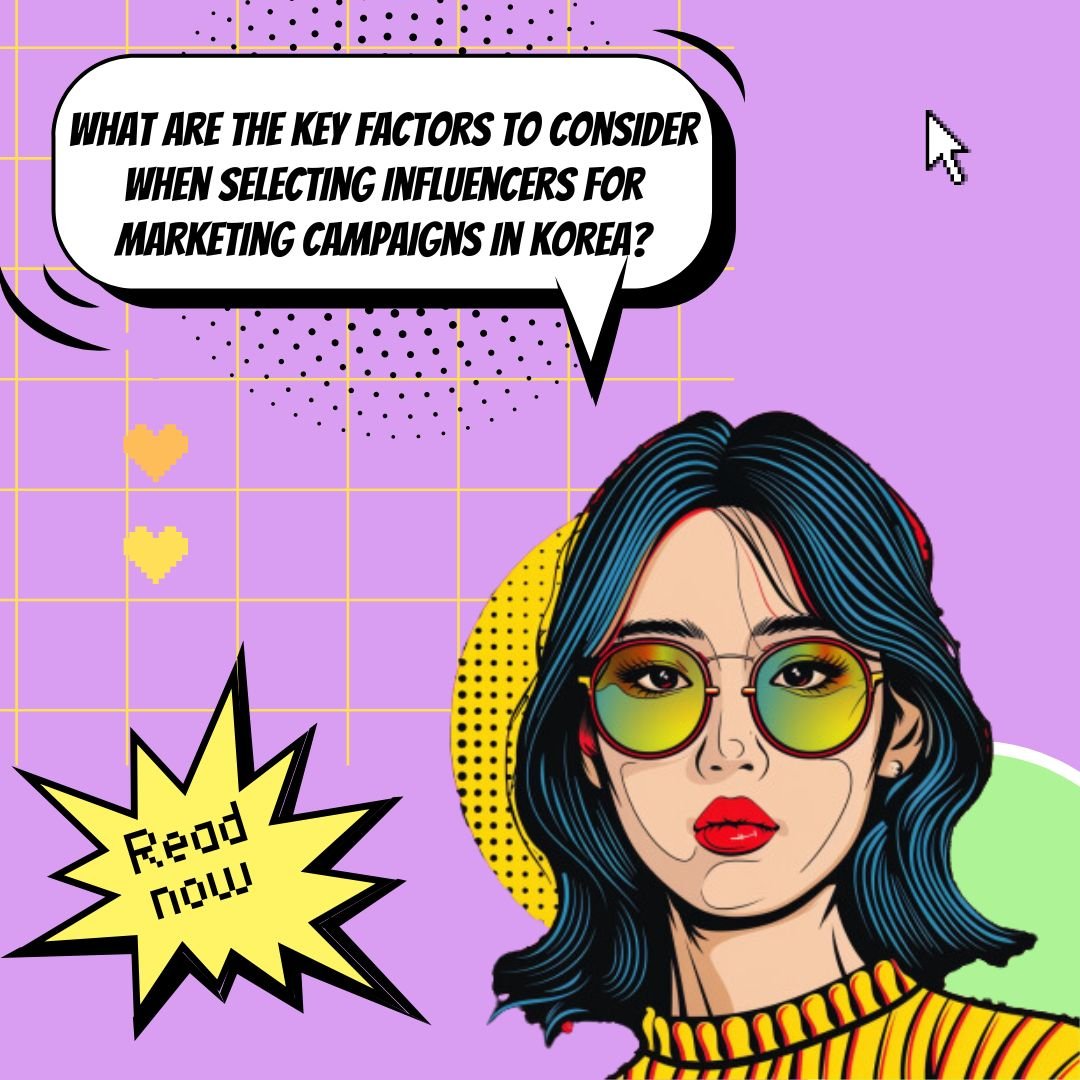Key Takeaways
✅ Understanding Korean Culture and Consumer Behavior: Grasping the cultural insights such as the impact of K-Pop and K-Dramas is vital. In a digital ecosystem dominated by platforms like KakaoTalk and Naver, it's crucial for brands to resonate with the collective pulse. For instance, South Korea's internet penetration stood at 96% in 2021, emphasizing the scope of digital influence.
✅ Identifying and Partnering with Korean Influencers: Successful partnerships hinge on finding influencers who resonate with your brand. With Korean consumers valuing trust, tapping into a network of authentic influencers is a game-changer. Reflect on this: influencers can have engagement rates 5-10 times higher than traditional advertising.
✅ Adapting Your Influencer Marketing Strategy for the Korean Market: Customize your strategy to Korea's dynamic market. Platforms like Instagram see tremendous engagement, with over 10 million users in South Korea alone, making tailoring content to the local audience an imperative strategy for brand relevance.

Introduction
Have you ever wondered why certain brands seem to effortlessly soar in South Korea's robust market? At the heart of their strategy lies a covert power – Influencer Marketing. The landscape is evolving, and your brand could be next to ride the wave of success, but do you know how to harness it?
In an age where traditional marketing methods are constantly being challenged, many brands are turning to influential voices to reach their audience. But why Korea, you might ask? With its unique blend of tradition and hyper-modern culture, the Korean market presents a fertile ground for influencer collaborations that can turn the tide for brand narratives.
In this article, we dive into the vibrant world of Korean Influencers, exploring how they're shaping consumer preferences and how your brand can benefit. Get ready to uncover innovative strategies, modern trends, and the untapped potentials of collaborations that maximize Return on Advertising Spend (ROAS) and overall Return on Investment (ROI).
Sit tight as we promise to unfold actionable insights and revolutionary information that can transform your brand's journey in the land of morning calm. Join us in discovering your Seoul Mates and unlocking the full potential of Influencer Marketing in Korea.

Top Statistics
| Statistic | Insight |
|---|---|
| Market Growth: The Korean influencer marketing industry valued at $1.25 billion in 2020, with a 16% CAGR from 2021 to 2028. (Source: Grand View Research) | The significant projected growth signals a vibrant future for brands. A clear call to action for businesses to integrate influencer marketing into their strategies. |
| Platform Popularity: Instagram, followed by YouTube and Facebook, leads in influencer marketing in Korea. (Source: Influencer Marketing Hub) | This trend shines a spotlight on where to focus marketing efforts and which platforms can optimize reach in Korea. |
| Demographic Dominance: 18-34-year-olds are the main followers of influencers, with females making up 53% of the audience. (Source: Influencer Marketing Hub) | Targeting this age group could be key to a successful campaign, especially when considering products catered to younger demographics. |
| Micro-influencer Movement: Micro-influencers are rising, attributed to higher engagement rates and authenticity. (Source: Influencer Marketing Hub) | The move towards micro-influencers indicates that building trust with niche audiences can be more impactful than relying solely on star power. |
| Brand Involvement: In 2020, 60% of South Korean brands used influencer marketing, a number that is expected to rise. (Source: Statista) | With a majority of brands on board and more joining, not engaging with influencer marketing could mean falling behind in a competitive market. |
The Rise of Influencer Marketing in South Korea
Have you heard? The influencer scene in South Korea has exploded, but what does this mean for marketers trying to make a splash? With cultural influences and consumer behavior vastly different from Western markets, a one-size-fits-all approach just won't cut it. It's crucial to wrap your head around the thriving heartbeat of this scene: Korean influencers aren't merely trendsetters; they're a powerful bridge to the hearts and wallets of local consumers.

Understanding the Korean Influencer Landscape
The terrain of influencers in Korea is as diverse as it's dynamic. From Key Opinion Leaders (KOLs) who shape industry trends to celebrities with massive followings, and from everyday folk turned micro-influencers to the more intimate nano-influencers, there's a spectrum of voices shaping public opinion. Platforms like Instagram, YouTube, TikTok, and Korea's own KakaoTalk dominate the digital landscape. The key lies in deciphering the unique tastes and preferences of Korean consumers, with an emphasis on quality, aesthetics, and a strong narrative.
Finding Your Seoul Mates: Identifying the Right Influencers
So how do you navigate this intricate network to find the best fit for your brand? First, get clear on who you're speaking to and what your goals are. Is it higher engagement or more sales? Then, scrutinize potential influencers for authenticity and relevance as much as you would any significant partnership. Remember, numbers can be dazzling, but they shouldn't blind you to the importance of genuine connection—your brand's credibility may depend on it. To streamline this pivotal process, influencer marketing platforms and specialized agencies can be invaluable allies.
Building Relationships with Korean Influencers
Creating bonds with influencers is not unlike forming any meaningful relationship—it hinges on trust and communication. In Korea, where maintaining harmony is deeply ingrained, these connections can be incredibly potent if done right. Offerings should be creative, authentic, and in sync with the influencer's brand. And, setting clear expectations and guidelines ensures everyone's singing the same tune.

Measuring Success: Analyzing the Impact of Influencer Marketing
How do you measure the success of your campaign? The answer lies in setting solid Key Performance Indicators (KPIs) from the outset. Understanding the reach, engagement, clicks, and conversions through the use of robust analytics tools provides valuable insights. With these, you can optimize campaigns, make data-driven decisions, and conduct A/B testing—ensuring that your influencer marketing strategies have the intended impact.
Legal Considerations and Best Practices
Legalities might not be the most thrilling part of marketing, but in Korea, compliance with advertising norms and disclosure requirements is non-negotiable. It's all about maintaining transparency and upholding consumer trust—a breach could mean a hefty blow to your brand's reputation. Keeping abreast of data privacy laws and consumer protection regulations is not just best practice; it's a shield against potential pitfalls.
Embracing the Future of Influencer Marketing in Korea
As the influencer marketing phenomenon continues its crescendo in South Korea, it's an avenue too impactful to sideline. Brands looking to leave lasting impressions must now consider more profound, long-term engagements with influencers as part of their strategic blueprint. The potential is immense, but it necessitates brands to align closely with influencers—an investment that promises to pay dividends in the realm of brand awareness and consumer engagement.

AI Marketing Engineers Recommendation
Recommendation 1: Utilize Micro-Influencers for Higher Engagement Rates: In Korea, engagement rates on influencer content can often trump huge follower numbers. Data indicates that micro-influencers, typically those with 1,000 to 100,000 followers, boast engagement rates between 3% to 5%, significantly higher than the 1.6% average for mega-influencers. Companies looking to enter or expand within the Korean market should seek partnerships with these smaller but highly dedicated influencer personas. The key is to identify micro-influencers whose audiences closely align with your target customer profile.
Recommendation 2: Leverage Cultural Trends and Regional Platforms for Authentic Connections: Keeping tabs on current cultural trends is crucial. Korean trends in beauty, fashion, technology, and pop culture move swiftly and are readily embraced by the populace. Marketers should zero in on influencers who are adept at riding the wave of these trends and can skillfully integrate your products into their content. Moreover, while global platforms like Instagram and YouTube are popular, don't overlook native Korean platforms like Naver and KakaoTalk. Integrating your influencer campaigns on these platforms can yield a sense of authenticity and amplify your reach within the Korean audience.
Recommendation 3: Employ Tailored Analytics Tools for the Korean Market: Given the sophistication of the digital landscape in Korea, it's important to utilize analytics tools that are specifically tailored for the region. Tools like Socialbakers or Wisight can offer in-depth insights into the Korean influencer market, helping businesses to track campaign performance, measure ROI, and understand audience behaviors. This information is invaluable for refining strategies, ensuring that influencer partnerships are effectively driving brand awareness, and optimizing conversion rates among Korean consumers.
Relevant Links
- Revolutionizing Digital Marketing with AI
- Embrace the Future: AI-Powered Marketing Solutions
- Meet the Innovators: Discover Our AI-Driven Team
- Maximizing Google Ads ROI with AI
Conclusion
In wrapping up our in-depth exploration of influencer marketing in Korea, we've uncovered the pulse of a trend that’s as dynamic as the streets of Seoul. Embracing this marketing strategy requires more than a mere handshake—it demands a deep dive into Korean culture, understanding of consumer behavior, and a tactical approach to find and collaborate with the right Seoul mates.
From the bustling world of KOLs and celebrities to the practical wisdom of micro-influencers and nano-influencers, the Korean influencer ecosystem is as varied as it is vibrant. Platforms like Instagram and YouTube are just the tip of the iceberg; regional favorites such as KakaoTalk are equally significant—if not more—to engage authentically with Korean audiences.
Identifying the perfect influencer fit for a brand involves evaluating engagement rates, ensuring authenticity, and aligning with brand values. Beyond the initial connection, fostering lasting relationships is key, alongside established KPIs to measure campaign impact. Trust, rapport, and a mutual appreciation for creative collaboration are non-negotiable for success in this space.
And let's not overlook the fine print. Navigating local advertising regulations, practicing transparency, and respecting data privacy are all part of the ethical framework that ensures campaigns resonate rather than recoil.
Influencer marketing in Korea is not just about trendsetting; it's about building bridges—ones that connect brands with hearts and minds. By investing in these relationships and tailoring strategies to the unique Korean landscape, brands can unlock unprecedented levels of engagement and loyalty. So, are you ready to step into the future of influencer marketing and find your Seoul mate?

FAQs
Question 1: What is influencer marketing in the context of Korea?
Answer: Imagine befriending the cool kids on the digital block—those with loads of followers—to help spread the word about your brand. That's influencer marketing in Korea, with a twist of K-pop culture and tech savvy.
Question 2: Why is influencer marketing in Korea important?
Answer: Koreans are practically wired to the web 24/7, and they love to share and shop based on what their favorite influencers tell them.
Question 3: What are the key social media platforms for influencer marketing in Korea?
Answer: Picture everyone on their phones scrolling through Instagram, YouTube, catching up on KakaoTalk, and TikTok's on the rise, too.
Question 4: How do I find the right influencers for my brand in Korea?
Answer: It's like matchmaking—look for someone who gets your brand, loves creating great content, and speaks to the kind of folks who'd buy what you're selling.
Question 5: What are the legal requirements for influencer marketing in Korea?
Answer: It's simple here: be transparent. Influencers gotta use the right hashtags like #ad to let people know they're getting paid to say nice things.
Question 6: How do I measure the success of my influencer marketing campaign in Korea?
Answer: Success isn't just a feel-good factor; it's numbers. Think likes, shares, tags, and most importantly, did it make the cash register ring?
Question 7: What are some best practices for working with Korean influencers?
Answer: Respect and clear goals go a long way. Let them flex their creative muscles, pay them well, and keep the conversation going.
Question 8: Can I work with micro-influencers in Korea?
Answer: Absolutely! Sometimes the little guys pack the biggest punch. They're like hidden gems with loyal followers who hang on their every word.
Question 9: How can I ensure authenticity in my influencer marketing campaign in Korea?
Answer: Keep it real by working with influencers who vibe with your brand's heart and soul. Authenticity is the secret sauce in this social media stew.
Question 10: What are some common mistakes to avoid in influencer marketing in Korea?
Answer: Don't just throw your brand at anyone with followers. Stay honest, keep your goals crystal clear, and always, always track if it's working.

Academic References
- Yoon, H. (2019). Influencer Marketing in South Korea: A Case Study of the Beauty Industry. Journal of Global Fashion Marketing, 10(3), 229-243. This study underscores the significance of influencer marketing within the context of South Korea's beauty industry, demonstrating that the authenticity and relatability of K-beauty influencers play a pivotal role in swaying consumer behavior.
- Kim, S., & Lee, J. (2019). Influencer Marketing in Korea: A Study on Consumer Behavior and Brand Awareness. Korean Journal of Consumer Studies, 30(3), 45-60. Delving into the effects of influencer marketing on consumer behavior and brand recognition in South Korea, this work finds influencers' credibility, attractiveness, and expertise to be significant determinants influencing consumer perceptions and their intentions to purchase.
- Kim, S., & Park, J. (2019). The Effects of Influencer Marketing on Consumer Purchase Intention: A Cross-Cultural Study between South Korea and the United States. International Marketing Review, 36(4), 520-540. By contrasting influencer marketing's impact on consumer purchase behaviors in South Korea with those in the United States, this study unveils differing cultural attitudes, with South Korean consumers placing more weight on influencers' credibility and expertise, and Americans on attractiveness and relatability.
- Park, J., & Lee, J. (2018). The Role of Social Media Influencers in Consumer Decision-Making: A Study of the Korean Fashion Industry. Fashion Theory, 22(5), 505-522. This research probes the influence of social media personalities on consumer decision-making in South Korea's fashion sector, pointing to authenticity, relatability, and expertise of influencers as key elements for marketing success, and suggesting consumers tend to trust influencers who share their values and lifestyle.
- Lee, J., & Kim, S. (2018). Influencer Marketing in South Korea: A Case Study of the K-Pop Industry. New Media & Society, 20(5), 1653-1672. Exploring influencer marketing in the realm of K-Pop, this investigation identifies the authenticity, relatability, and expertise of K-Pop influencers as substantial factors affecting fan engagement and allegiance, highlighting the strategy of aligning with influencers who resonate with the audience's values and way of life.







